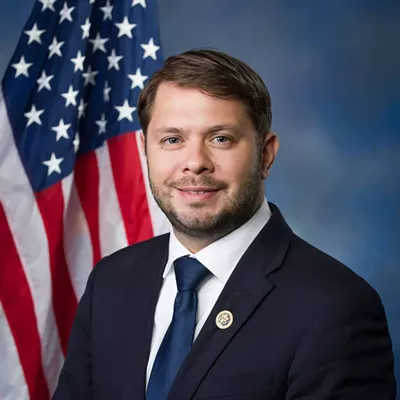"People like me were in a better situation prior to Plan D," explains 39-year old Natalie Kellogg. A dialysis patient for the last decade, Kellogg is one of those who has fallen into the doughnut hole and insists, "I'm absolutely worse off."
When Congress adopted the Plan D program, it authorized substantial subsidies of drug purchases less than $2,250 a year, along with total coverage of purchases more than $5,100. But to save taxpayers tens of billions of dollars annually, in between those figures, people are on their own and facing thousands of dollars of out-of-pocket prescription expenses.
Before Plan D took effect in January, Kellogg says she paid $65 a month for one of her expensive drugs. But now that she is entering the doughnut hole, it will cost her $400, a price she can't afford.
Kellogg once might have been able to get this drug free from its manufacturer, but that practice has stopped. Or she could have received complimentary samples from her physician, but he doesn't have enough of them.
"My only option," Kellogg laments, "is to hock myself into debt." Selecting not to pursue that course of action, she has chosen instead to do without the medication. This decision, she realizes, will land her in the hospital, and thus cost the taxpayers even more money.
"If I'm in the hospital," Kellogg says, "they cover the cost of the drug. I just don't have the $400, so I'm in a Catch-22 situation, and I'll be in it every year."
"If you can afford the doughnut hole, it's not an issue," Kellogg continues. "But if you can't, what do you do?"
The estimated number of people affected by the Plan D funding gap varies widely. A recent report prepared by PricewaterhouseCoopers for the Healthcare Leadership Council, an industry organization, sets the figure at 8 percent of Plan D participants, or 3.4 million people nationwide.
On the other hand, senior-citizen group AARP wrote last month: "Estimates of how many people will fall into the gap vary from 24 to 38 percent of all (Plan D) enrollees." If those figures are more accurate, up to 16 million Americans could be impacted.
Whatever the reality, Stewart Grabel of the Pima Council on Aging indicates the doughnut hole is just one more aspect of Plan D which is causing confusion.
"People have been surprised by it, even though it was in all the materials," Grabel says. "They don't have a choice, but were totally unprepared for it."
One senior, who knew the funding gap was coming, bought some of his prescription drugs from Canada until this year (See "Illegal Drugs," March 27, 2003). Calculating it would save him money, he shifted to a low-cost Plan D insurance policy, and has now entered the doughnut hole.
"I then had two choices," this man says, wanting to remain anonymous, since his out-of-country drug purchases were technically illegal. "I could continue to purchase drugs in the United States, or go back to Canada."
Deciding to stay with his Plan D coverage, even though he is now paying 100 percent of the cost of his prescriptions, this man hopes it will save him money in the long run.
"I may get (to exit the doughnut hole) sooner than I thought," he reflects. "But if I don't until November, it would have been better to go back to Canada."
The doughnut hole isn't the only recent problem with Plan D. Before it went into effect on Jan. 1, proponents of the benefit argued the private-sector competition it fostered among insurers and drug companies would lower prescription prices, but so far, that hasn't happened.
According to two recent reports, in the first three months of this year, the price of popular brand-name prescriptions has risen at a rate three times that of inflation. At the same time, according to consumer group Families USA, prices paid for drugs by the Department of Veterans Affairs were almost 50 percent lower than those offered by Plan D insurance companies.
This is an important distinction, since Congress specifically prohibited the federal government from negotiating the price of drugs under Plan D. The VA, however, isn't similarly bound.
Because that provision in the law has apparently already cost taxpayers huge sums of money, it infuriates the senior who used to buy his drugs from Canada. "It's ridiculous," he says.
Grabel concurs. While acknowledging many seniors have benefited from Plan D, he points out: "It could have been done better at much less cost."
While understanding there are problems with Plan D, supporters stress the plan has saved most participants money--even those who fall into the doughnut hole.
According to the PricewaterhouseCoopers report, people in the funding gap who had no previous prescription-drug coverage will save an average of almost $2,000 a year under Plan D.
Natalie Kellogg doesn't see things that way, and hopes the doughnut hole is done away with, at least for some people.
"For long-term patients with critical care," she says, "they need coverage that's way over $2,250. ... I don't think the politicians understand how (Plan D) is affecting those of us with long-term medical problems."










